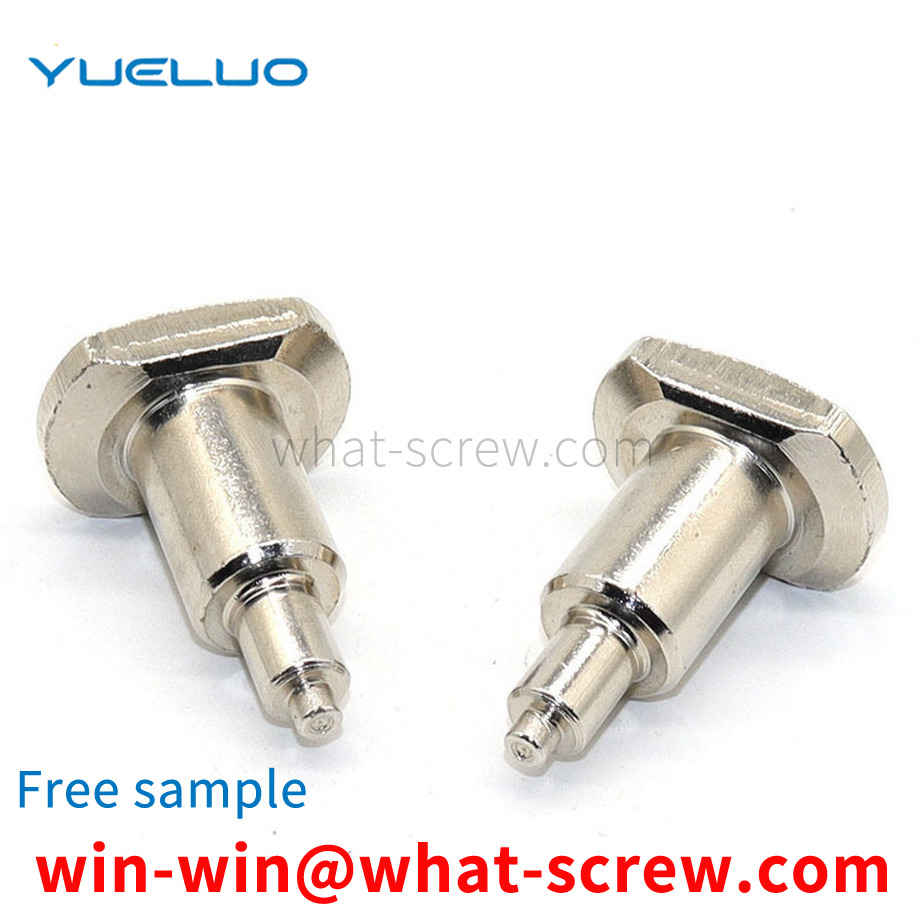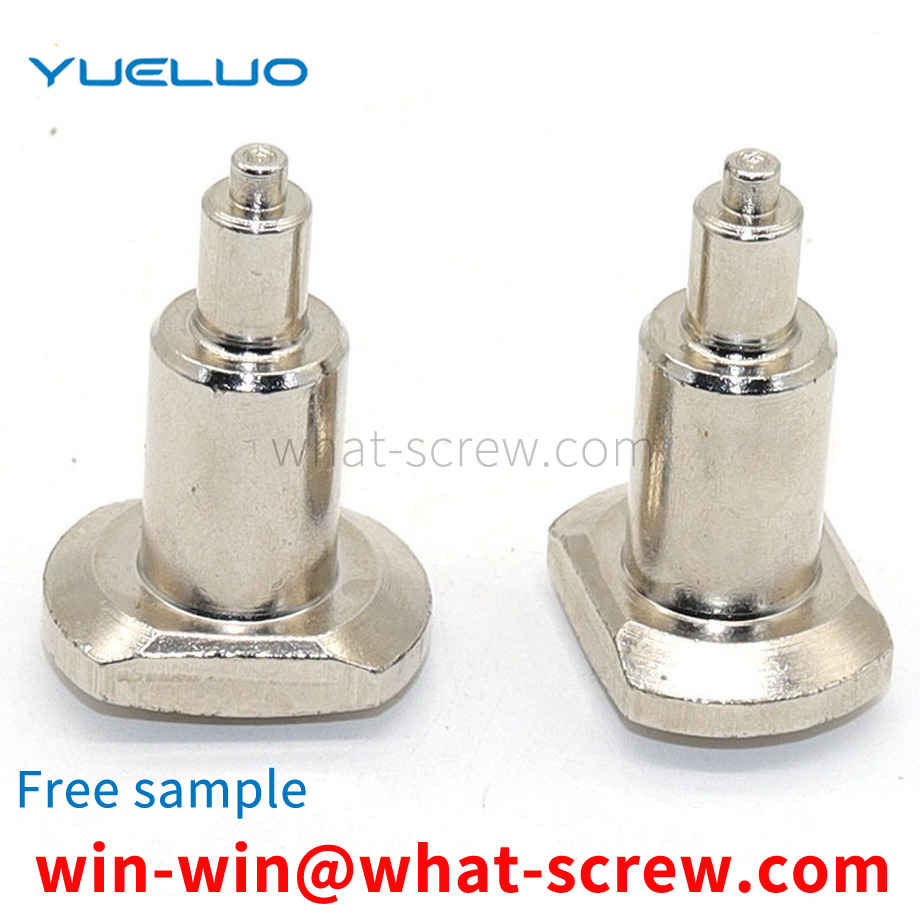The main part of the pin screw is an ordinary screw, and the pin can be arranged in the melting section of the screw or the drop groove of the metering section or the smooth cylindrical surface without screw grooves at the end of the metering section. The pins are arranged in a certain arrangement, with varying degrees of density and quantity. Cylindrical pins are formed by fitting the pins into the holes of the threaded rod; square or diamond-shaped pins are formed by milling directly on the threaded rod. If these pins are set in the melting zone, the pins can break up the solid bed, destroy the two-phase flow, stir the solid and liquid phases together, increase the contact area between the undissolved solid phase fragments and the contained material, and promote molten. If the pin is set in the melt conveying area, its main function is to divide the material flow, increase the interface, change the direction of the material flow, and rearrange the flow beam. Divide and merge multiple times, change the flow direction, and homogenize the melt composition and temperature. The mixing section is an inwardly slotted structure arranged at the end of the common screw homogenizing section, and its outer diameter is equal to the outer diameter of the screw. The grooves are divided into several groups, and each group is the confluence area of the material. The materials are divided by grooves, meet in the confluence area, and then divide and confluence. The principle is similar to the pin type. The characteristic of the separate screw is that in addition to the original screw thread (called the main screw) on the melting section, there is also an additional thread (called an additional thread) whose outer diameter is slightly smaller than the outer diameter of the main thread, and the main and auxiliary threads are With different leads, the secondary thread starts from the end of the feeding section (and connects with the feeding section here), and after several threads, gradually intersects the main thread of the homogenizing section. The screw groove depth and thread lead of this kind of screw change gradually from the beginning of the feeding section to the end of the homogenization, that is, the thread lead gradually narrows from the width, and the groove depth gradually becomes shallower from the depth, which can maximize the compression of the material.
However, although the above-mentioned screw belt (2) can achieve the expected effect, it is also found in its actual implementation. Although this structure has multiple grooves on both sides of the main body for the driving and turning of the locking screw tool, However, the groove is only used for driving the screw belt drive, and since the screw will swing on the screw belt, it is impossible to stably align the screw on the screw belt with the point where the screw is to be set. , which leads to great inconvenience in operation and use, and also affects the efficiency of screw and screw installation, so that there is still room for improvement in the overall structural composition.
The global economy continues to slump and overseas export trade is sluggish. Many fastener companies at home and abroad are facing severe tests. Accelerating economic transformation and structural upgrading is imminent, and developing overseas markets is undoubtedly an important way out for the development of the current fastener industry. From the fourth quarter of 2011 to the first half of 2012, affected by the objective environment, the development speed of the fastener industry may slow down, but from the third quarter of 2012, with the policy in place, the convening of the 18th National Congress of The upcoming series of development policies, etc., can promote the further development of the industry. And we must insist on innovation and adjustment and transformation, we must continue to rely closely on key industries such as automobiles, new energy, aerospace, shipbuilding, urban transportation, IT, electronic appliances, construction, etc., accelerate the optimization and upgrading of fastener products, and promote fasteners. The whole industry develops healthily and steadily. The global fastener market size exceeds 50 billion US dollars, and China's total fastener production in 2012 is also expected to reach about 6.8 million tons. However, compared with the manufacturing powerhouses such as the United States and Japan, there is still a big gap in my country's fastener industry.
In recent years, more fasteners have been used in rivet nuts, which have replaced some existing welding methods to a certain extent. Rivet nuts are a way to join some difficult-to-weld equipment and other components. The use of rivet nuts requires rivet nut equipment (manual rivet nut equipment, etc.). Matters needing attention before using manual rivet nut equipment. 1. First, make sure the nozzle screws are properly assembled. According to the size of the rivet nut, select the appropriate equipment and rivet bolt. Every connecting part is not secure. 2. Confirm the deformation length or displacement of the rivet nut, and then leverage the long angle. 3. The scale ring of the rivet nut equipment is used to adjust the rivet stroke, which can be adjusted freely as needed. When adjusting the length of the rivet bolt, open the two handles and adjust the device head sleeve. The rivet bolts are exposed for a length slightly greater than the length of the rivet nut, which will eventually adjust the nut and device sleeve.
Procurement and sales in the testing process know that the quality of screws is manufactured, not detected, but in manufacturing, we must try our best to make them as good as possible. But it is unlikely to be completely error-free and error-free. We all know that errors are unavoidable and can only be approached infinitely. Therefore, at this time, the quality inspection of the screw is required to improve the quality of the screw. At the beginning of ordering from screw wire material into the production of screw industry manufacturers, you must first check the wire diameter of the screw wire and the material of the screw. Generally, the wire diameter of the screw is measured with a caliper to measure the size of the wire diameter, whether it is suitable for self-ordering. Same size. After testing these, it is the testing in the production process, starting from the head of the screw, to determine the size of the head, the opposite side of the head, the diagonal angle, the depth of the cross groove, the tolerance range of the screw, and so on. These are checked with calipers. In the inspection of all aspects when rolling teeth, the main thing is whether the thread can pass the pass and stop gauge, and whether the screw thread can pass the gauge and stop. Next is the electroplating measurement problem. After electroplating, whether it meets the requirements of environmental protection and whether it can pass the time required by the salt spray. Tools include environmental testing machines and salt spray testing machines. In short, in the process of screw production and sales, there must be necessary tools to detect the quality of screws. The summary should be summarized as follows: calipers, hardness testers, salt spray machines, environmental testing machines, pass and stop gauges, etc. When producing and selling screws, there will be a screw specification and screw model. With the screw specification and screw model, we can understand what specification screw and what size screw the customer needs. Many screw specifications and screw models are based on national standard specifications and models. Generally, such screws are called ordinary screws, which are generally available on the market. There are some non-standard screws, which are not based on the national standard specifications, models and sizes, but are customized according to the standards required by the product materials. There is no stock in the general market at all. In this way, it is necessary to make drawings and samples.
We have many years of experience in the production and sales of screws, nuts, flat washers, etc. The main products are: machine wire screws with washers, cotter pins, accessories furniture nuts, Japanese standard 304 stainless steel screws and other products, we can provide you with suitable products for you fastener solutions.



















 Service Hotline
Service Hotline




